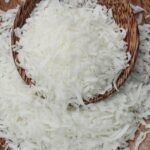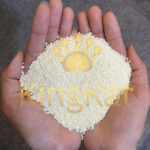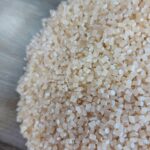CASHEW NUT SHELL OIL

Table of Contents
ToggleTapioca starch
Derived from the cassava plant, has become an increasingly important component in various industries due to its versatile properties. One such industry where tapioca starch plays a crucial role is the textile industry. As the demand for sustainable and eco-friendly materials grows, tapioca starch has emerged as a preferred choice for textile manufacturers worldwide. This article explores the various applications of tapioca starch in the textile industry, highlighting its benefits and the reasons behind its rising popularity.
The Role of Tapioca Starch in Textile Processing
In the textile industry, tapioca starch is primarily used as a sizing agent. Sizing is the process of applying a protective layer to yarns before weaving to prevent breakage and ensure smoother processing. Tapioca starch, with its excellent film-forming ability, creates a uniform coating on the yarns, which enhances their strength and reduces friction during the weaving process. This not only improves the efficiency of the weaving process but also contributes to the production of high-quality fabrics.
Enhancing Fabric Quality with Tapioca Starch
One of the significant advantages of using tapioca starch in textile manufacturing is its ability to improve the quality of the final product. The starch provides the necessary stiffness and body to the fabric, making it easier to handle during subsequent processes like printing, dyeing, and finishing. Additionally, tapioca starch is known for its compatibility with other textile chemicals, which allows for better absorption of dyes and pigments, resulting in vibrant and long-lasting colors.
Moreover, the use of tapioca starch contributes to a softer and smoother fabric feel. This is particularly important in the production of textiles used for clothing, where comfort is a key factor. The natural origin of tapioca starch also means that it is non-toxic and hypoallergenic, making it suitable for a wide range of applications, including those that require close contact with the skin.
Environmental Benefits of Tapioca Starch
As sustainability becomes a central concern for industries worldwide, the textile sector is no exception. Tapioca starch is a biodegradable and renewable resource, making it an environmentally friendly alternative to synthetic sizing agents. Unlike petrochemical-based products, tapioca starch does not release harmful chemicals into the environment during production or disposal, thereby reducing the overall ecological footprint of textile manufacturing.
Furthermore, tapioca starch is sourced from the cassava plant, which is cultivated in tropical regions with minimal input requirements. Cassava is a drought-resistant crop that can thrive in poor soils, making it a sustainable and economically viable option for starch production. This not only supports local farmers but also contributes to the overall sustainability of the textile industry.
Cost-Effectiveness of Tapioca Starch
In addition to its environmental benefits, tapioca starch is also a cost-effective solution for textile manufacturers. The production of tapioca starch is relatively inexpensive compared to other natural and synthetic sizing agents. Its efficiency in improving yarn strength and reducing breakage rates during weaving further translates to cost savings in the manufacturing process. Moreover, the use of tapioca starch can lead to reduced waste and lower energy consumption, contributing to overall cost efficiency.
Conclusion
Tapioca starch has proven to be a valuable asset in the textile industry, offering numerous benefits ranging from improved fabric quality to environmental sustainability. As the industry continues to evolve, the demand for natural and eco-friendly solutions is expected to grow, further solidifying the role of tapioca starch in textile manufacturing. By incorporating tapioca starch into their processes, textile manufacturers can not only enhance the quality of their products but also contribute to a more sustainable and responsible industry. As a result, tapioca starch is poised to play an even more significant role in the future of textile production.












